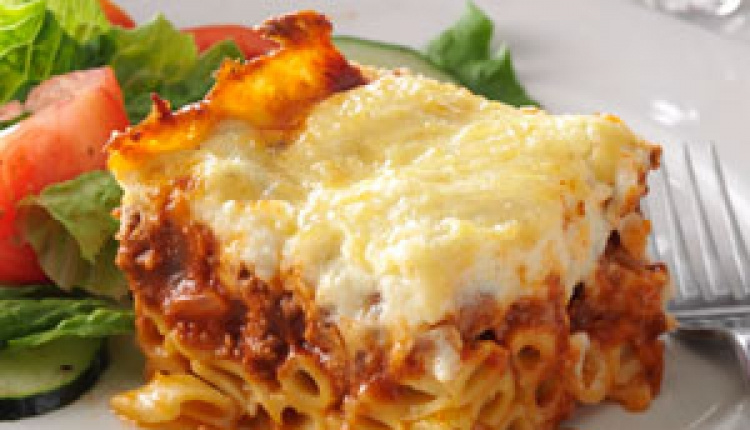Traditional Greek Pasta - Pastitsio
- by XpatAthens
- Monday, 04 May 2015

Regardless of where pasta originated from, the Greeks have embraced it with open arms and typically incorporated it into their cuisine to make it their own. As well as the many known dishes such as Spagetti Bolognese and Carbonara, which is just as popular in Greece as abroad, there are many other pasta dishes which have been given that Greek touch to them to make them uniquely Greek, such as Pastitsio. Pastitsio is an all time favourite in Greece, especially with children.
This pasta recipe is a great meal to make for a casual dinner with friends, you can make the meal ahead of time, and then, when ready, put it in the oven to bake before serving. Ideal when you don't want to spend a lot of time in the kitchen.
Ingredients
500g pastitsio or macaroni pasta
500g mince
1 onion, finely chopped
1 carrot, peeled and grated
1 tablespoon parsley
2 tablespoons butter
pepper, salt
2 large fresh tomatoes, grated (or 3/4 tin of tomatoes, chopped)
1 or 2 egg whites
2 teacups grated cheese
Bechamel Sauce
1 litre milk, warmed
4 tablespoons heaped plain flour
fresh nutmeg - grated, 3 quick grates (or 3 pinches dried nutmeg)
125g butter
2 egg yolks
salt, pepper
Preparation
Fry onion in butter until soft.
Add mince, fry until brown, breaking up any lumps of mince so it is all small.
Add the grated carrot and parsley and mix in.
Add the tomatoes, which have been grated or put in a blender.
Add salt and pepper. Add some water - about 100-150ml.
Cover and leave to simmer for half an hour.
When ready, cool slightly and stir in the egg whites.
Boil the pasta until al dente. Drain.
Meanwhile you can make the bechamel sauce
To make the bechamel sauce:
Melt the butter in a large saucepan.
Add the flour and mix in well for a while until it goes a bit yellow but doesn't burn.
Add a little milk, mix it in well and slowly add all the rest of the milk.
(At the start use a wooden spoon to mix the flour with the butter, then change to a whisk when adding the milk.)
Whisk thoroughly to make sure there are no lumps.
As you add the milk, have it on a low heat then once all the milk has been added and there are no lumps, you can increase the heat slightly to heat the milk and stirring regularly, the sauce will thicken.
When you add the milk, this is the time that it is possible for the sauce to get lumps in it, especially if you haven't made this sauce before.
To rectify, take the saucepan off the heat, and use an electric hand mixer on the sauce (in the saucepan), until you have a smooth sauce and all the lumps are gone. Return to the heat and warm until it thickens.
Add a little salt and pepper and the nutmeg, be careful not to add too much nutmeg - it really only needs a little amount to give the sauce a wonderful flavour. About 3 quick grates of a fresh nutmeg or 3 small pinches of dried nutmeg.
Nutmeg is only used in bechamel sauce when made to go with pastitsio. If you are using this recipe to go with another meal, you can omit the nutmeg.
When the sauce thickens, leave to cool a while, then add 2 egg yolks, and stir in to the sauce.
In a large deep baking tray, place half the pasta in the tray.
Sprinkle 1 cup cheese over the pasta.
Spread all the mincemeat over the pasta evenly.
Finish with the rest of the pasta, flatten out over the mincemeat.
Sprinkle over the pasta the other cup of cheese.
Pour bechamel sauce all over the top of the pasta and ensure it covers all the pasta.
Dot little pieces of butter over the top of the sauce to give it colour.
At this stage you can leave the pastitsio to bake later or bake straight away.
Bake in a moderate oven for approximately 30-45 minutes, depending on whether the food is already hot or not.
The sauce should have a lovely golden colour.
As with all baked macaroni recipes, even if the food is hot, baking it will help set the layers of food.Source: Ultimate-Guide-To-Greek-Food


